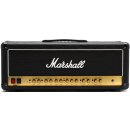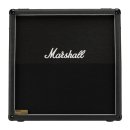Guitar Amplifiers
Categories
 Electric Guitars
Electric Guitars
 Western Guitars
Western Guitars
 Classical Spanish Guitars
Classical Spanish Guitars
 Kids Guitars
Kids Guitars
 Guitar Strings
Guitar Strings
 Guitar Stands
Guitar Stands
 Pedals & Effects
Pedals & Effects
 Guitar Accessories
Guitar Accessories
Guitar Amplifier: Selection, Types, and Maintenance
Choosing the right guitar amplifier is a critical factor in shaping your sound and performance as a guitarist. A guitar amplifier serves as the core of your sound, and selecting the right one can transform your tone from ordinary to exceptional. There are many types of guitar amplifiers available on the market, including tube amplifiers, solid-state amplifiers, and modeling amplifiers. Whether you play rock, metal, jazz, or any other genre, your amplifier plays a vital role in your tone and how you express your music. In this article, we’ll explore the key aspects of selecting a guitar amplifier, optimizing your sound, and maintaining your amplifier to ensure longevity.
Tube vs. Solid-State Amplifiers: What’s the Difference?
One of the first decisions you'll need to make when choosing a guitar amplifier is whether to go with a tube amplifier or solid-state amplifier. Tube amplifiers are known for their warm, organic sound and their ability to produce natural overdrive when pushed hard. This type of amplifier is often favored by rock and blues musicians for its rich tone and dynamic response. However, tube amps require more maintenance and can be more expensive to buy and maintain.
Solid-state amplifiers, on the other hand, are generally more reliable, less expensive, and require less upkeep. They produce a cleaner sound, making them popular among jazz musicians and those who prefer a sharper tone with less distortion. The biggest difference between a tube amplifier and a solid-state amplifier is how they handle dynamics. Tube amplifiers respond more to your playing style, meaning they can sound different depending on how hard you play.
How to Choose the Right Guitar Amplifier for Your Playing Style
Selecting the best guitar amplifier depends on several factors, including your genre, budget, and tonal preferences. If you play metal or rock, you’ll likely want an amplifier with high gain and plenty of distortion, such as a stack amplifier. A guitar amplifier for metal is often designed to handle heavy drop tunings and aggressive riffs, requiring more wattage and a durable cabinet design.
For jazz guitarists, a solid-state amplifier is often the go-to choice because of its clean, bright tone with minimal overdrive. If you’re playing in smaller spaces or at home, you might consider an amplifier with lower wattage. A guitar amplifier for home use with 10-30 watts is ideal as it provides enough volume to fill a small room without needing to crank it up to its maximum.
Combo vs. Stack: Which is the Best Choice?
Another key decision when choosing a guitar amplifier is whether to go with a combo amplifier or a stack amplifier. A combo amplifier combines the amp head and speaker into one unit, making it more portable and convenient. Combo amps are often ideal for home use, practice, or smaller gigs where you don’t need extreme volume or tone-shaping.
Stack amplifiers consist of a separate amplifier head and speaker cabinet, offering more flexibility in choosing different speakers and cabinets. This makes them ideal for larger live performances where you need more volume and control over your sound. Stack amplifiers are often the standard in rock and metal genres, where guitarists require maximum volume and tone control. If you’re playing large venues or need to push your sound to the extreme, a stack amplifier may be the best choice for you.
How Wattage and Cabinet Size Affect Your Sound
Wattage is an important factor to consider when choosing an amplifier. Generally, the higher the wattage, the louder the amplifier can go. A guitar amplifier for live performances should typically be at least 50 watts to ensure it can fill a larger space with sound. For home use, a lower wattage of 10-30 watts is usually more than enough, especially if you don’t want to disturb your neighbors.
In addition to wattage, the size and quality of the speakers in the cabinet play a significant role in shaping your sound. A larger cabinet with more speakers will produce a fuller, more resonant tone. Additionally, the materials used in the cabinet, such as wood, also affect how the sound is projected. Many professional guitarists prefer amplifiers with heavier wood materials for a warmer, more dynamic tone.
Maintaining Your Guitar Amplifier: Extending Its Lifespan
A guitar amplifier is an investment, and proper maintenance can significantly extend its lifespan. If you’re using a tube amplifier, it’s important to know that the tubes will need to be replaced periodically, usually every 1-2 years depending on usage. Maintaining tube amplifiers also involves keeping the amplifier free of dust and allowing it to cool down after use, as the tubes can get very hot.
Solid-state amplifiers require less maintenance but it’s still important to keep them clean and ensure all connections are functioning properly. If your amplifier has built-in effects or is a guitar amplifier with Bluetooth and USB connectivity, make sure to keep the software updated and avoid damaging the connections. By following these maintenance tips, you can extend the life of your amplifier and ensure that it delivers optimal sound for many years to come.





